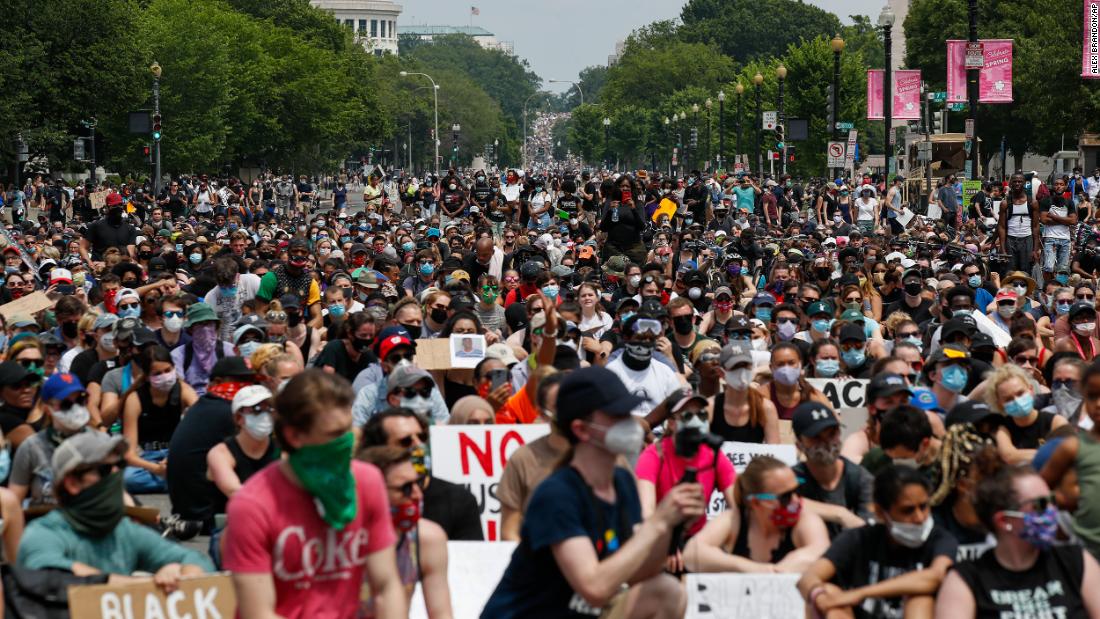[ad_1]
Gibbs was worried about the risk of coronavirus. Doctors from US Centers for Disease Control and Prevention director Dr. Robert Redfield on down have cautioned demonstrators that crowds provide a perfect opportunity for the virus to spread.
But after weeks of holing up at home under pandemic lockdown, she was glad to finally have something she could do.
“The pandemic has made us feel kind of helpless,” said Gibbs, a 23-year-old behavioral science consultant.
“We can’t really control how many tests there are and how many masks there are — those types of things,” Gibbs told CNN. “But I can control the time that I spend to put these bags together and I can control how much time I want to spend doing this. Those are things I can be in control of.”
On Friday, Gibbs hit the store. She wasn’t feeling brave enough to march shoulder to shoulder with strangers, but she wanted to be part of the demonstrations. “So we just made a run to Costco and bought a whole bunch of stuff,” she said.
As she spoke, Gibbs was handing out her care packages to the throngs of people headed down 16th Street towards the White House, where thousands were gathering for a ninth day of demonstrations in the capital.
With traffic blocked and police showing a minimal presence, the four lanes of one of the city’s main avenues provided plenty of room for distancing. Demonstrators, almost all of them wearing face masks, were spaced out widely among ice cream vans and food trucks.
“It’s a beautiful way to participate while still staying far away. I feel comfortable,” Gibbs said from behind her woven face mask.
Sarah Foster also felt the demonstrations were a chance to take action after weeks of passive inaction.
The 36-year-old engineer walked from her home to join the demonstrations, loosely organized by several groups in Washington on Saturday. “So this is finally something we can do, and something important that we can be part of, that we can help solve,” Foster told CNN.
She wore a black cloth mask and said she had no trouble keeping her distance from other people on wide avenues closed off to traffic by police.
“Obviously, people are a little bit closer together than is the recommended six-foot distance, but I think what we are doing is so important,” she said. “Everyone’s gotten used to finding a way to stay separated.”
Experts worry about virus spreading among protesters
“I do think there is a potential, unfortunately, for this to be a seeding event,” Redfield said during a hearing in the House on the coronavirus response. He said the risk of infection is higher in major cities where there’s been significant transmission.
“Based on the way the disease spreads, there is every reason to expect that we will see new clusters and potentially new outbreaks moving forward,” he added. While there was no tear gas in DC on Saturday — no conflicts at all between demonstrators and police — Redfield noted that the coughing caused by tear gas would be an effective way to spread viruses.
Monica Schoch-Spana, a senior scholar of medical anthropology at the Johns Hopkins Center for Health Security, said she sees the issue of George Floyd’s killing as a crisis important enough to bring people out despite their fears about the coronavirus.
“People have been sequestered for a long period of time. And, quite frankly, the majority of people have stuck in there with regard to physical distancing,” Schoch-Spana said. “They have now found a reason to break with that established pattern that has gone on for weeks and weeks and weeks.”
“I am sure it feels very freeing and invigorating to be out. But that was a conscious choice to embrace this particular message. It wasn’t the opening of the malls. It was political injustice that’s been brewing for quite some time,” Schoch-Spana said.
For Gibbs, it was reason enough to take the risk.
“We have been social distancing to the max — working from home, staying inside, quarantining — all of the above,” she said. “This is our first time out in actual public, and it’s for this, and I think that says something.”
[ad_2]
Source link



